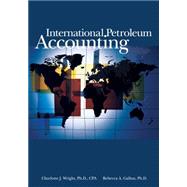| Preface | x | ||||
|
1 | (82) | |||
|
3 | (16) | |||
|
3 | (1) | |||
|
3 | (1) | |||
|
4 | (2) | |||
|
6 | (3) | |||
|
9 | (1) | |||
|
9 | (3) | |||
|
12 | (1) | |||
|
13 | (1) | |||
|
14 | (1) | |||
|
14 | (5) | |||
|
19 | (34) | |||
|
19 | (1) | |||
|
19 | (1) | |||
|
20 | (1) | |||
|
20 | (4) | |||
|
24 | (4) | |||
|
28 | (2) | |||
|
30 | (1) | |||
|
31 | (6) | |||
|
37 | (3) | |||
|
40 | (13) | |||
|
53 | (30) | |||
|
53 | (3) | |||
|
56 | (1) | |||
|
57 | (7) | |||
|
64 | (5) | |||
|
69 | (6) | |||
|
75 | (8) | |||
|
83 | (48) | |||
|
85 | (34) | |||
|
85 | (1) | |||
|
85 | (3) | |||
|
88 | (7) | |||
|
95 | (11) | |||
|
106 | (13) | |||
|
119 | (12) | |||
|
119 | (1) | |||
|
119 | (4) | |||
|
123 | (2) | |||
|
125 | (2) | |||
|
127 | (4) | |||
|
131 | (180) | |||
|
133 | (40) | |||
|
133 | (1) | |||
|
133 | (2) | |||
|
135 | (1) | |||
|
136 | (6) | |||
|
142 | (5) | |||
|
147 | (9) | |||
|
156 | (5) | |||
|
161 | (4) | |||
|
165 | (8) | |||
|
173 | (34) | |||
|
173 | (1) | |||
|
173 | (7) | |||
|
180 | (7) | |||
|
187 | (4) | |||
|
191 | (1) | |||
|
192 | (2) | |||
|
194 | (2) | |||
|
196 | (8) | |||
|
204 | (3) | |||
|
207 | (38) | |||
|
207 | (1) | |||
|
208 | (4) | |||
|
212 | (4) | |||
|
216 | (1) | |||
|
217 | (5) | |||
|
222 | (3) | |||
|
225 | (13) | |||
|
238 | (7) | |||
|
245 | (36) | |||
|
245 | (1) | |||
|
246 | (9) | |||
|
255 | (7) | |||
|
262 | (10) | |||
|
272 | (9) | |||
|
281 | (30) | |||
|
281 | (2) | |||
|
283 | (3) | |||
|
286 | (3) | |||
|
289 | (4) | |||
|
293 | (4) | |||
|
297 | (4) | |||
|
301 | (1) | |||
|
301 | (10) | |||
|
311 | (192) | |||
|
313 | (28) | |||
|
313 | (1) | |||
|
314 | (2) | |||
|
316 | (1) | |||
|
316 | (3) | |||
|
319 | (4) | |||
|
323 | (2) | |||
|
325 | (4) | |||
|
329 | (2) | |||
|
331 | (10) | |||
|
341 | (20) | |||
|
341 | (1) | |||
|
341 | (3) | |||
|
344 | (2) | |||
|
346 | (2) | |||
|
348 | (7) | |||
|
355 | (1) | |||
|
356 | (5) | |||
|
361 | (64) | |||
|
361 | (1) | |||
|
361 | (2) | |||
|
363 | (1) | |||
|
364 | (3) | |||
|
367 | (1) | |||
|
367 | (4) | |||
|
371 | (3) | |||
|
374 | (9) | |||
|
383 | (3) | |||
|
386 | (6) | |||
|
392 | (2) | |||
|
394 | (4) | |||
|
398 | (12) | |||
|
410 | (4) | |||
|
414 | (11) | |||
|
425 | (38) | |||
|
425 | (1) | |||
|
426 | (4) | |||
|
430 | (3) | |||
|
433 | (5) | |||
|
438 | (4) | |||
|
442 | (4) | |||
|
446 | (8) | |||
|
454 | (9) | |||
|
463 | (40) | |||
|
463 | (5) | |||
|
468 | (13) | |||
|
481 | (7) | |||
|
488 | (5) | |||
|
493 | (4) | |||
|
497 | (6) | |||
| Index | 503 |








